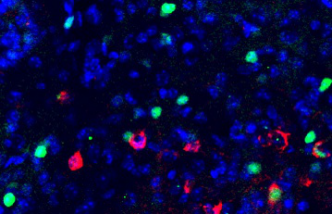LABS
Hailan Hu
Introduction:
Dr. Hailan Hu is the Professor and Senior Principal Investigator at the ZIINT and School of Medicine at Zhejiang University. Dr. Hu graduated from Beijing University with a B.S. degree in Biochemistry & Molecular Biology (1996). She pursued her Ph.D. degree in neuroscience at University of California at Berkeley, where she was a student of Prof. Corey Goodman, working on repulsive axon guidance. After completing PhD (2002), she conducted postdoctoral research with Dr. Julius Zhu at University of Virginia (2003-2004), and Dr. Roberto Malinow at Cold Spring Harbor Laboratory (2004-2008), working on mechanisms regulating AMPA receptor trafficking in emotional behaviors and disease models. Before joining Zhejiang University, Dr. Hu was a principal investigator at the Institute of Neuroscience, Chinese Academy of Sciences (2008-2015). Her laboratory seeks to understand how emotional and social behaviors are encoded and regulated in the brain. Dr. Hu is a recipient of the Howard Hughes Predoctoral Fellowship (1997-2002), the Damon Runyon Postdoctoral Fellowship (2003-06), the Chinese Hundred Talent Plan Award (2009), the CAS Excellent Mentorship Award (2012, 2014), the National Outstanding Youth Award, the Meiji Life Science Award, L’Oreal Woman Scientist award (2015), Chinese Young Scientist Award (2016).
Research Interests
The ability to experience emotions makes our life colorful, and greatly affects our thinking and behavior. Research in my lab aims to understand how emotional and social behaviors are encoded in the brain, with a main focus on the neural circuitry underlying depression and dominance hierarchy. The key questions we are addressing are: How are different emotional states represented in the brain? What and where molecular changes occur when emotion regulation goes awry in diseases such as depression and post-traumatic stress disorder? How does dominance hierarchy arise from interplay between activity of specific neural circuits and social experience of animals? Using combinatorial techniquesincluding imaging, electrophysiology, molecular biology and optogenetics, we hope to visualize the neural circuits that are activated during the behavior of interest; elucidate the function of specific neural circuits and cell groups in behavior; and establish the causal relationship between the activity of neural circuits and corresponding behavioral output. We hope these studies will provide new insights into how emotions shape and color our life, and shed new light on the treatment of emotional disorders.
Ongoing Projects:
Neural representation of emotional value
Rewarding and aversive emotional stimuli evoke distinct patterns of behavior. How does the brain represent these different emotional values and generate corresponding behavioral output? In order to extract the value representation of an emotional stimulus, we simultaneously map the neural ensembles of rewarding and aversive emotional stimuli, and compare their activation patterns in the same mouse brain (1).
Molecular and circuit mechanism of depression
The habenula encodes the negative reward and its hyperactivity has been implicated in depression. We aim to search for molecular mechanisms underlying the habenular hyperactivity in depressed animals. In collaboration with Dr. John Yate’s laboratory at the Scripps Institute, we performed a high-throughput quantitative proteomic screen to search for proteins that show altered expression in the habenula of congenitally depressed rats (from Dr. Fritz Henn). Several proteins implicated in neuronal plasticity were identified. Through the functional characterization of these candidate molecules in synapse physiology and depression behaviors, we hope to identify biomarkers of depression and reveal key molecular mechanisms underlying the disease pathology (3).
Neural circuit mechanism of social hierarchy
Dominance hierarchy is a fundamental organizing mechanism for most social animals. The social economic status has been identified as the single strongest predictor of health. Yet getting to the top of the hierarchy is not simply determined by brute strength. Personality traits including courage, confidence, persistency and motivational drive, regulated by high cortical functions, also play an important role. In a recent work (2, 4), we explored the circuitry for dominance hierarchy by synaptic perturbation in the medial prefrontal cortex (mPFC), a candidate brain region implicated extensively in social cognition. We established that social rank in mice is transitive, relatively stable, and highly correlated among different behavioral measures. Furthermore, the hierarchical status of mice could be changed from dominant to subordinate, or vice versa, by viral manipulation of the synaptic strength in mPFC. We are currently using molecular and optogenetic tools to delineate the mPFC downstream circuitry involved in dominance hierarchy.

Selected Recent Publications:
1. Xiu J, Zhang Q, Zhou T, Zhou T-T, Chen Y, Hu H (2014) Visualizing an emotional valence map in the limbic forebrain by TAI-FISH.Nature neuroscience, Advanced online, Sept 21.
2. Wang F, Kessels H, Hu H (2014) The mouse that roared: neural mechanisms of social hierarchy. (review) Trends in Neuroscience, Advanced online, Aug 23.
3. Li K, Zhou T, Liao L, Yang Z, Wong C, Henn F, Malinow R, Yates J, Hu H (2013) βCaMKII in lateral habenula mediates core symptoms of depression.Science 341:1016-1020.
4. Wang F, Zhu J, Zhu H, Zhang Q, Lin Z, Hu H (2011) Bidirectional control of social hierarchy by synaptic efficacy in medial prefrontal cortex. Science, 334:693-697. (Highlighted in Science Perspectives)
Lab members:
